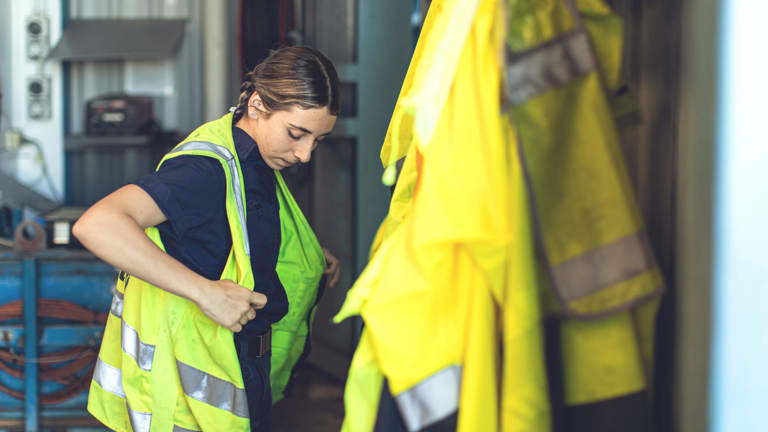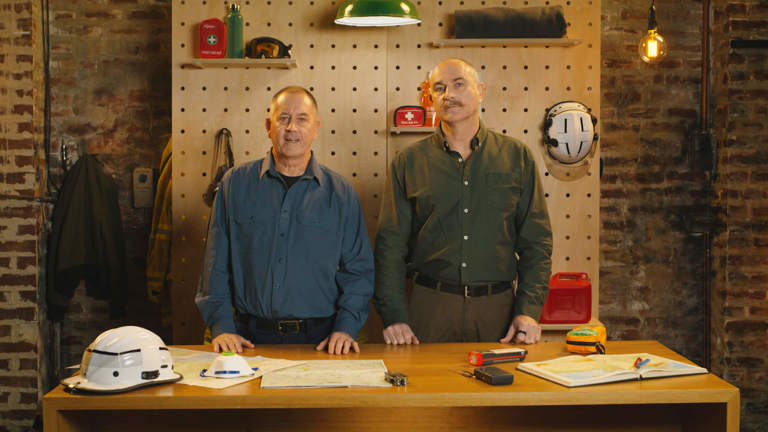Bushfires are an unpredictable threat to both people and property. The good news is that there’s one common piece of modern technology that can help us be better prepared for a bushfire emergency – the smartphone.1
From the Emergency Alert texts sent directly to our mobiles to apps that deliver real-time bushfire alerts and updates, our phones have become indispensable items in our bushfire preparation toolkit.
“All your plans and decisions during a bushfire emergency will be based on the quality of information you have and how current it is, so it pays to have as many sources as possible,” says Mark Dobson, long-serving firefighter and volunteer team manager at Disaster Relief Australia.
“That includes taking advantage of the latest tech to keep track of encroaching bushfires in your area or if you find yourself impacted by fire while away on holiday.”
Here’s a guide to the apps and alerts that could make all the difference should disaster strike in your area. All smartphone apps listed are available for download on iPhone or Android devices through the App Store and Google Play.
“Don’t wait for a bushfire crisis to hit.”

“Don’t wait for a bushfire crisis to hit,” says Mark. “Consider downloading a few of these useful apps now while time is on your side.”
Mobile apps to help you prepare for a bushfire
You can start preparing for a fire emergency well before bushfire season starts with the help of these free apps.
My Bushfire Plan: Create, share and update your step-by-step bushfire survival plan and store it for the future.2
BOM Weather: Receive warning alerts on severe weather events, such as elevated fire danger and heatwave conditions, happening near you.3
IFRC First Aid: Access evidence-based first aid advice, national emergency numbers, and step-by-step guides for everyday accidents or in the event of a disaster. 4
Mobile apps to help you during a bushfire event
These free apps could provide critical updates in a fire emergency.
Emergency+: Developed by Australian emergency services to help you call Triple Zero (000) and supply your GPS coordinates so you can tell an operator where you are.5
ABC listen: Listen to emergency broadcasts from your local ABC radio station wherever you are. You may wish to ‘favourite’ your local station in the app to make it quicker to find in an emergency.6
AirRater: Get up-to-date information about air quality, including smoke and temperature, from sources such as the CSIRO and the Bureau of Meteorology. You can also receive alerts when conditions that may trigger symptoms such as shortness of breath are present in your location.7
NRS: This app from the National Relay Service provides access to NRS Chat, NRS Captions, Voice Relay and Video Relay services for people who are deaf or find it hard to hear or speak on the phone.8 Emergency calls using NRS Chat, NRS Captions and Voice Relay receive priority and are taken quickly.9
State and territory-based emergency apps
If you live in one of the following states or territories, there are apps for you to download that may assist during a bushfire emergency.
New South Wales
Hazards Near Me NSW: An interactive map showing current information about local emergencies, including floods and bushfires, and offering advice on how to stay safe. This app was previously known as Fires Near Me NSW. If you already have that app on your device, you can download the update from your app store.10
Live Traffic NSW: Access live traffic cameras to check evacuation routes before you leave, set up alerts on regular routes, and avoid weather-affected areas.11
Victoria
VicEmergency: Access official updates on unfolding natural disasters, including bushfires, and information on how to prepare. Create watch zones for location-specific alerts.12
VicTraffic: Avoid fire-affected roads and check your route in advance with up-to-date information from VicTraffic. While not technically a smartphone app, this web app can be added to your phone home screen for easy access.13
Queensland
QLDTraffic: Provides personalised push notifications for important traffic alerts on your regular routes, plus up-to-date information so you can avoid fire-affected roads.14
South Australia
Alert SA: Receive timely and relevant bushfire information and incident updates for fires in personalised Watch Zones.15
Northern Territory
NT Public Safety: Access essential contact information for police, fire and emergency medical services, along with safety tips.16
Road Report NT: Check road conditions and obstructions across the Territory.17
Western Australia
ServiceWA: Get bushfire warning notifications based on your location.18
St John First Responder: Notifies qualified first aiders within 500m of a medical emergency so they can assist until help arrives. You can also locate your nearest Urgent Care clinic.19
Emergency alerts and how to receive them
Aside from apps, you should receive bushfire alerts on your mobile phone from Emergency Alert. This national telephone warning system is used by Australia’s emergency services agencies to deliver text messages to mobile phones (and voice messages to landlines) within a defined area. There’s no need to register or sign up to Emergency Alert.20
“If you do get an emergency alert on your mobile, the caller ID will display the number +61 444 444 444. Make sure you don’t block this number, as it will stop you from receiving future alerts on your device,” cautions Mark.
Should I wait for an emergency alert warning to act?
While emergency alerts are an important part of Australia’s disaster response strategy, they won’t be used in every situation. Because alerts rely on working telecommunications networks, delivery during a fire can’t always be guaranteed.20
“Bushfires can start and spread very quickly, especially with the added impact of climate change, so you should always be aware of what’s happening around you. Check your local emergency services website or social media for updates on current warnings,” advises Mark.
“It’s also important to get across how the Australian Warning System works so you can act decisively the moment you know there is danger.”

Understanding the Australian Warning System
A nationally consistent set of warning icons known as the Australian Warning System (AWS) applies to hazards such as bushfires, floods, storms, cyclones, extreme heat and severe weather.21
Fire and emergency services across the country use the icons on their websites and in social media posts to communicate timely and relevant information. There are three warning levels:21
Advice (Yellow): An incident has started. There is no immediate danger. Stay informed in case the situation changes.
Watch and Act (Orange): There is a heightened level of threat. Conditions are changing, so you need to begin taking action to protect yourself and your family.
Emergency Warning (Red): An Emergency Warning is the highest level of warning. You may be in danger and need to take action immediately. Any delay now puts your life at risk.21
The AWS applies to multiple types of hazards; you can find more information on the bushfire-specific Australian Fire Danger Rating System here.
Stay connected in other ways
“Power, internet and phone signal can be the first things to go down in a bushfire, so don’t forget some simple alternate methods of staying aware, such as having a battery-powered radio and plenty of spare batteries,” recommends Mark.
Many state emergency services also use social media platforms such as Facebook, X and YouTube to share important emergency updates. These can be followed on your smartphone.
Here are some other important considerations:22
- Ensure your mobile phone is charged and have a backup power source, such as a battery pack.
- Have cash on hand in case a telecommunications outage affects ATMs and electronic payments.
- Have a paper copy of your family and friends’ contact details.22
And remember, if you think you’re in danger, don’t wait for any alerts to be issued – put your bushfire survival plan into action.23
For more expert tips to help you get bushfire ready, visit our you.prepared emergency content hub.
Mark Dobson
An active firefighter with more than 20 years of experience, Mark Dobson is the Founder of Ordinary Courage, a workplace mental health consultancy. Mark is a Churchill Fellow, a volunteer team manager for Disaster Relief Australia and a recipient of the Australian Fire Service Medal (2020) for his pioneering work supporting first responders’ mental health. Youi is proud to partner with Mark in the creation of this bushfire preparedness content.
The content in this article has been prepared based on current government and emergency services guidelines and expert advice provided at the time of publishing. This information is subject to change. Please be sure to check for the latest information and always consider your personal circumstances regarding bushfire preparedness and response.
Where you have increased your cover or reduced your excess within 72 hours (or other period noted on your policy schedule) of a flood, storm, hail or bushfire occurring, cover will be limited to the amount that was effective prior to the change. Loss, damage or legal liability caused by, resulting or arising from flood, storm, hail or bushfire during the first 72 hours (or other period noted on your policy schedule) of your policy first being purchased is excluded unless certain conditions apply. Refer to the relevant PDS, TMD and your policy schedule for full T&Cs.
1 Source: ABC – Your mobile phone could help save your life. Here’s how
2 Source: WA Government – My Bushfire Plan
3 Source: Bureau of Meteorology – The BOM Weather app
4 Source: Australian Red Cross – First Aid app
5 Source: Australian Government – Emergency+ app
6 Source: ABC – ABC listen app
7 Source: AirRater – AirRater
8 Source: Access Hub – The NRS app
9 Source: Access Hub – How to make an emergency call using the NRS
10 Source: NSW Government – Hazards Near Me app
11 Source: NSW Government – Live Traffic NSW
12 Source: VicEmergency – What is the VicEmergency app?
13 Source: VicRoads – VicTraffic
14 Source: Qld Government – QLDTraffic
15 Source: SA Government – Alert SA
16 Source: NT Police, Fire and Emergency Services – NT Public Safety App
17 Source: NT Government – Road Report NT
18 Source: WA Government – ServiceWA app: Emergency WA’s bushfire warning notifications
19 Source: St John WA – First Responder app
20 Source: Emergency Alert – Do Not Block +61 444 444 444
21 Source: Australian Institute for Disaster Resilience – Australian Warning System
22 Source: Department of Infrastructure, Transport, Regional Development, Communications and the Arts – How residents can prepare for telecommunication outages in emergencies or natural disasters
23 Source: WA Government – Stay Informed



